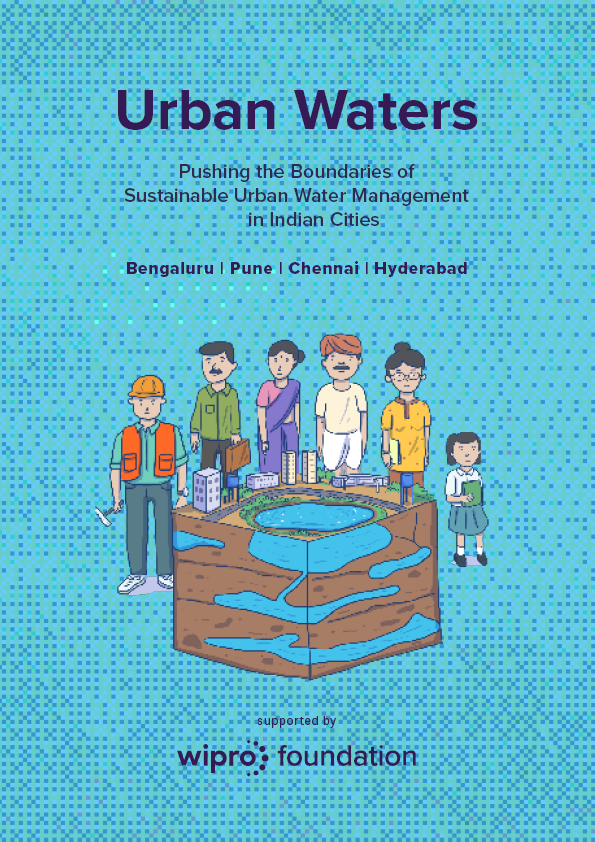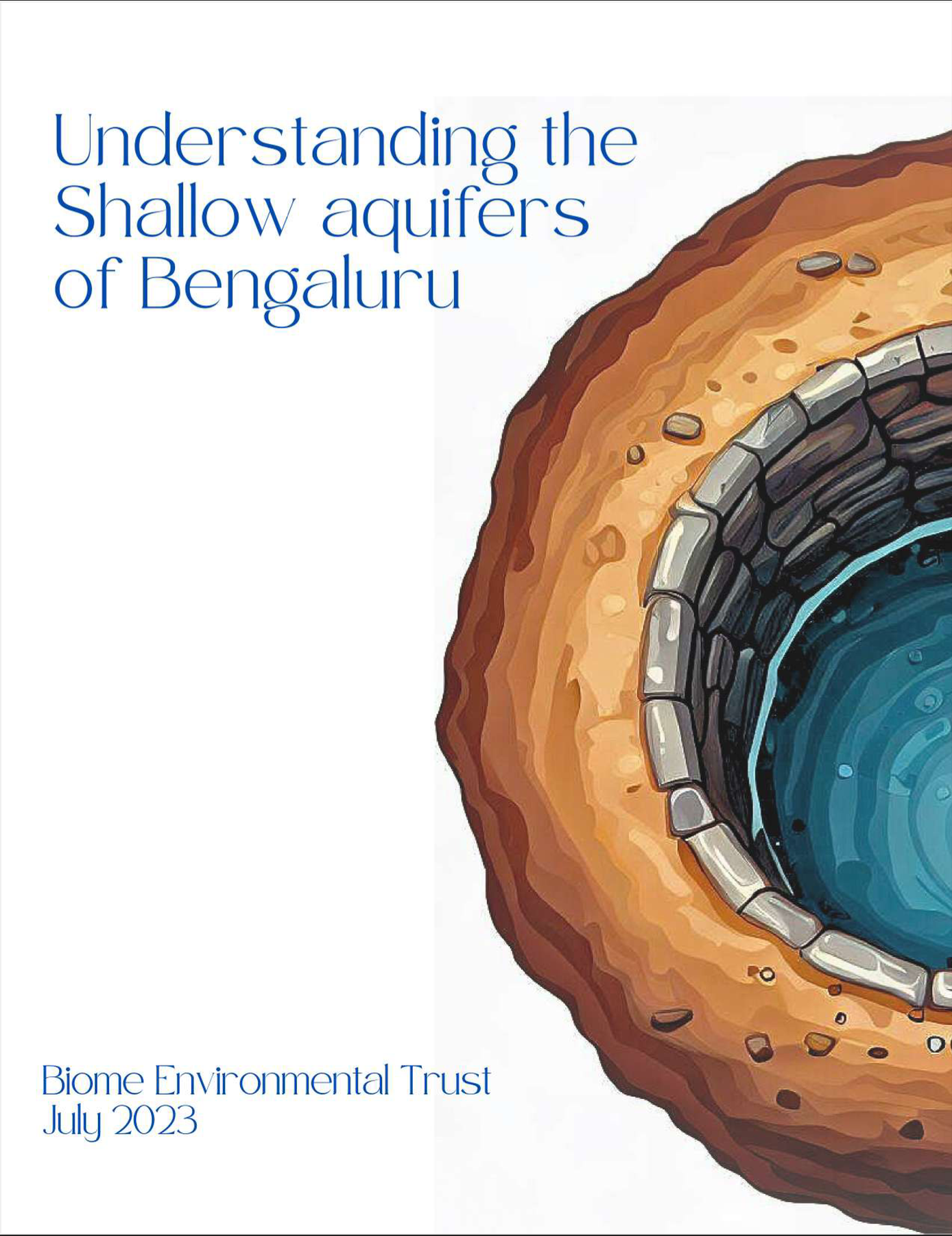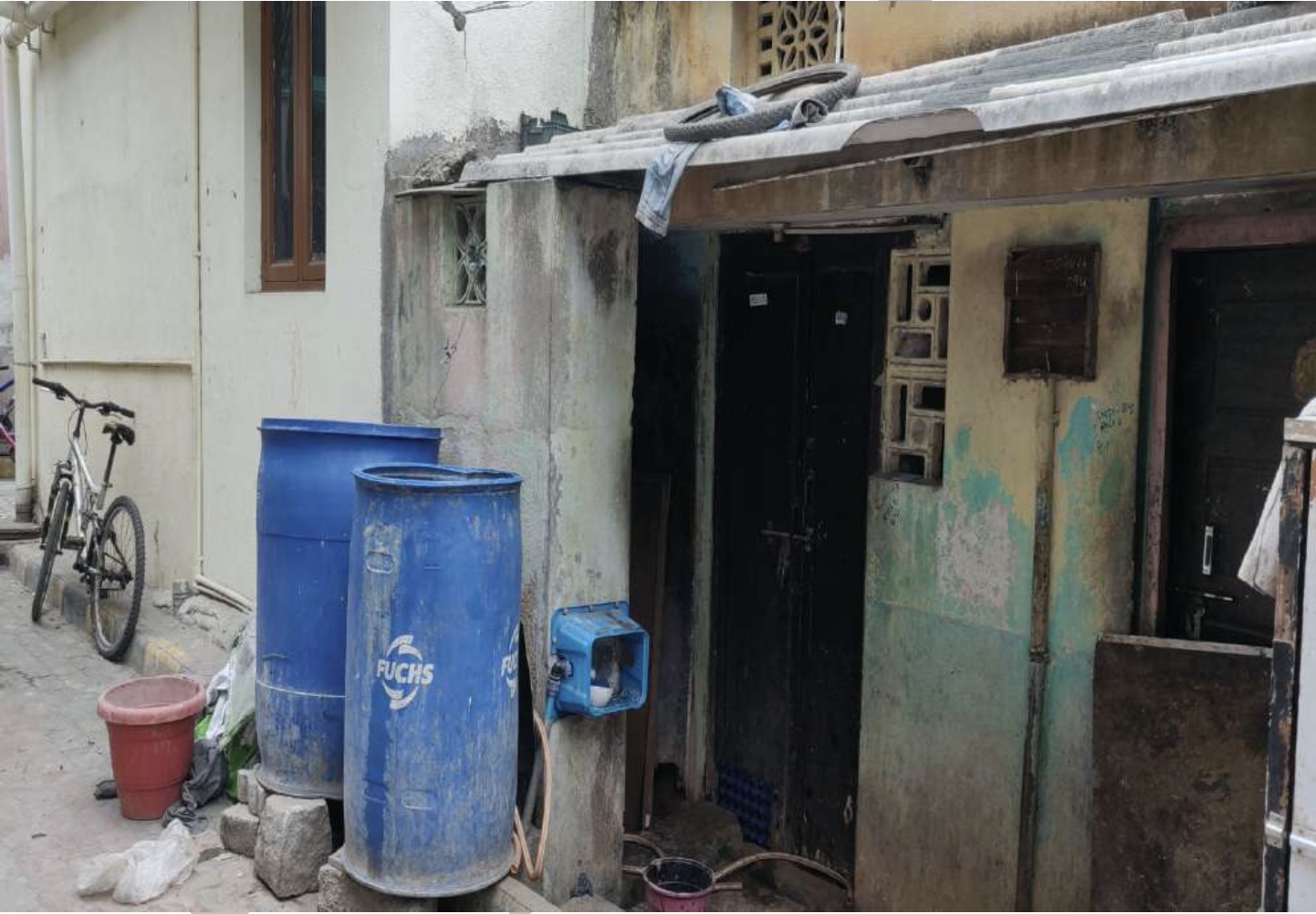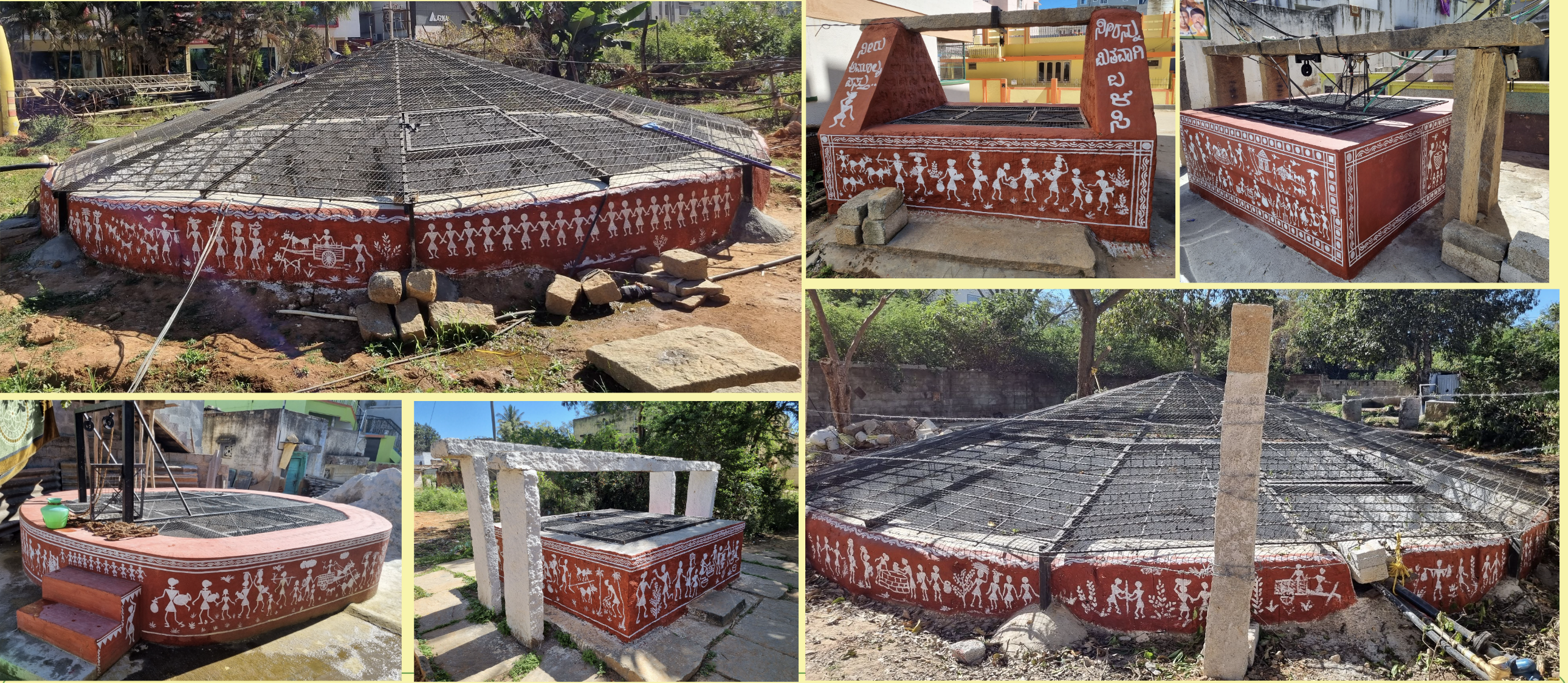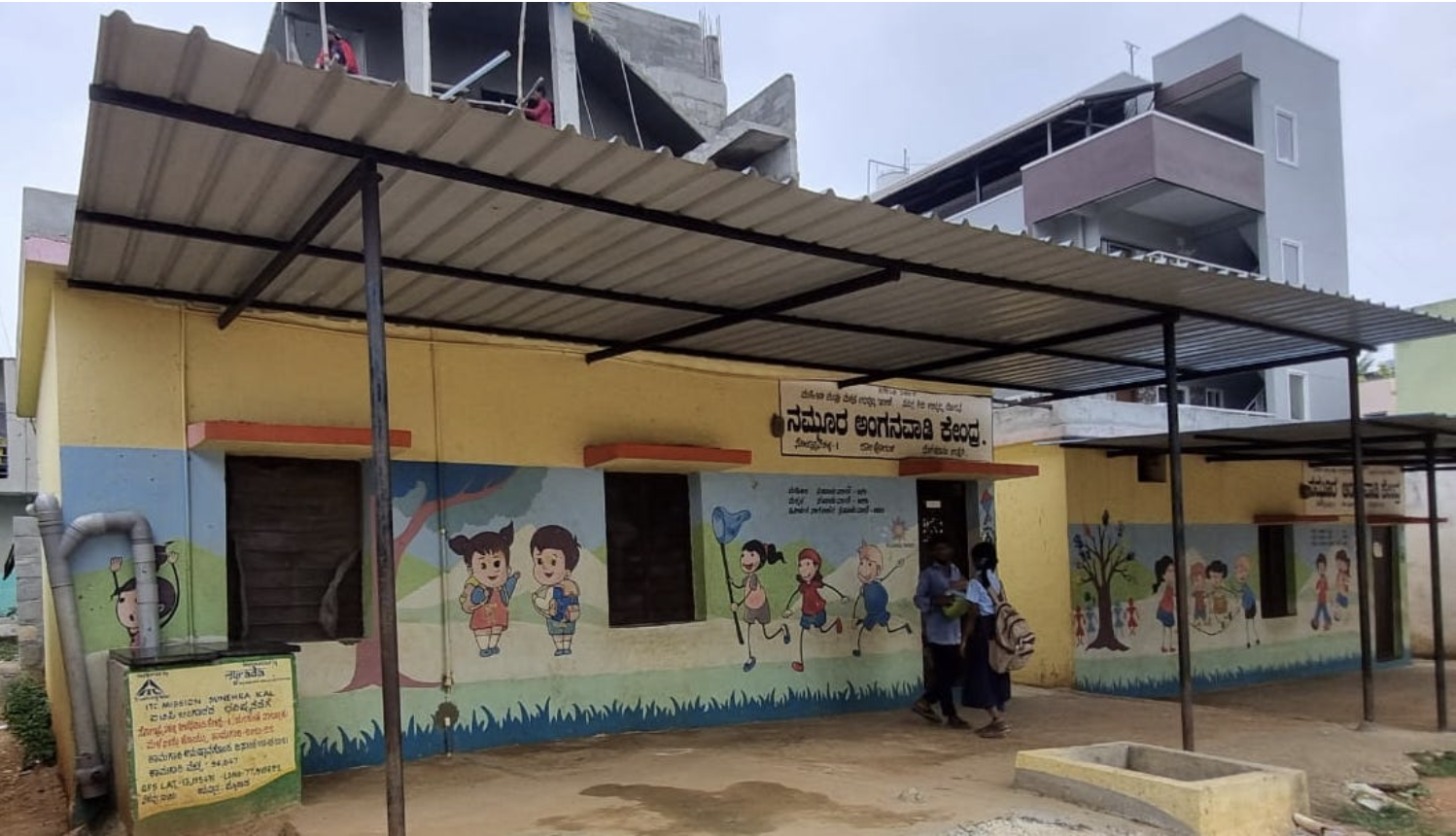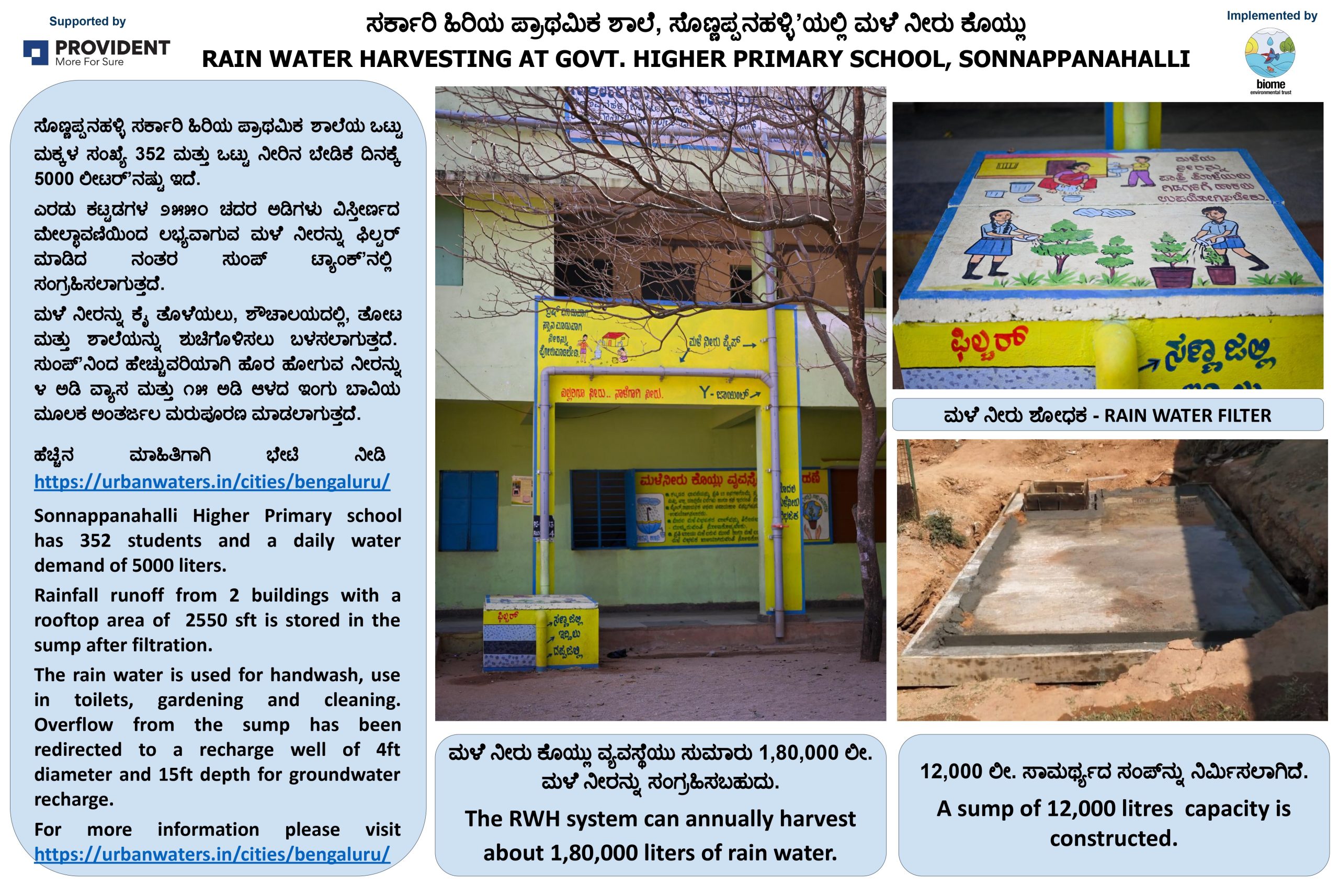Rainwater Harvesting 2: How to store and reuse rainwater
The main components of a rainwater harvesting system designed to directly reuse rainwater are:
- Catchment: The area where rain falls and the runoff from which it is collected, stored and used – in this case it is a rooftop
- Conveyance: In the case of buildings with flat roofs, downpipes carry rainwater falling on rooftop. In the case of sloped roofs, gutters can do the job. Gutters can be of any material like PVC, polycarbonate or galvanized iron; you can select the material depending on cost, durability and aesthetics.
- Filtration
- Storage
Collecting rain
Rainwater harvesting systems convey water from the rooftop through gutters and pipes to a storage (See videos for details on gutters & pipes, also see tips and precautions towards the end of this guide) .
To ensure good water quality management, the first rain separator (FRS) is designed so that the first 1-2 mm of rain is allowed to wash the rooftop and therefore ensures no accidental debris or dust is washed into the RWH storage from your clean catchment.
FRS is a critical part of the RWH system, as it ensures that dirty water gets filtered out. The FRS can be designed in many ways. One of the simplest ways to construct it is by putting in a cap or valve at the end of the downpipe that carries the rainwater. After every rain, you can simply open the cap/valve of the FRS to let out the first rain. You should also let water out of the FRS every time you clean the terrace. Watch water expert S. Vishwanath demonstrate this system here.
After the first rain accumulates at the FRS, the remaining quantity of rainwater passes through a filter, and then flows into the storage area in a barrel or sump.
Filtration
At the filtration stage, only the physical impurities in the rainwater are removed. Remember, chemical or dissolved contaminants will still remain in the water.

Designing the filter can be a tricky job, as the rate of water flowing into it varies depending on the amount of rainfall. Water flowing into the filter may flow slow or fast; hence the filter design should ensure that water doesn’t overflow or be stagnant. The filter is usually designed to accommodate an inflow rate of 1 mm per minute rainfall intensity.


Filter media, or the material used for filtration, typically includes 40 mm or 20 mm jelly stones, Netlon mesh, and wood charcoal to absorb dissolved gases and avoid foul odour. The bigger the filter media, the faster the filtration. Cloth folded into eight (panche or the white dhoti) can also serve as filter media, but the cloth has to be kept clean and dry.
Filters are basically of two types, wall-mountable readymades, and DIY filters, and can be of made of different materials such as barrel, ferrocement or brick masonry. They can be installed either above the ground or below, depending on the points at which the pipes can be connected. Underground or subsurface filters are ideal for large catchments, typically for rooftops with area above 1000 sqm. These filters usually have two components – a silt trap or desilting chamber, and a twin-chamber filter.
Storage and use
a) In Barrel
This is the easiest RWH method. This video shows how a rain barrel can be installed. The rain barrel should be placed on a stand, and a tap installed at the bottom of the barrel, so that you can easily collect water from it. Ideally the barrel should be placed in areas where you use the most water, such as laundry area, car park, garden etc.
b) In Sump
If you have an existing sump, it is easy to channel and store rainwater in it. But if the sump’s capacity is not large enough to hold the rooftop water runoff, you may need to build a new sump. The recommended size of the sump/barrel depends on the rooftop area and the number of members in the household. The sump can be made of RCC or brick masonry. This video explains how an RWH storage sump works.
In other cases, refer to this calculator. This tool can be used to design a sump of optimum volume knowing the rooftop that can be harvested from as well as the daily water demand.
If you do get high quality municipal water (as in the case of Cauvery supply in Bengaluru) and practice rainwater harvesting, you could use one sump to collect and store municipal water, and another for rain/borewell water. In apartments a separate overhead tanks would be useful to store pumped water from these two sumps and municipal water can be supplied to kitchens in each household for drinking and cooking purposes. And rain/borewell water can be supplied for all other purposes like bathing, washing clothes etc. Treated water from the apartment sewage treatment plant (STP) should be stored in a separate sump and tank, and used for toilet-flushing and gardening.
Tips and Precautions:
- Ensure that any overflowing water from the storage (in case of very heavy rain) has a clear pathway i.e. provide overflow pipes from the rainbarrel or sumps leading the overflow water safely to external stormwater drains.
- Ensure that the entire Rainwater harvesting system is designed in a way that by operating one or two valves / opening one or two caps (such as the First rain separators), the Rain water harvesting system can be bye-passed and the rain water can “go out as normal”.
- Colour code or label pipes for ease
- Set up a rain gauge to know the amount of rainfall in your locality
- Meter the harvested rainfall and your overall water use. These will help you understand how much you consume, and how much of your consumption can be met by rainwater
- In case you use the stored rainwater for drinking, monitor the water quality by getting it tested in a local lab
- Keep the terrace clean. Ensure no chemical, toxic or rusting material is kept there
- Clean the filter medium twice a year, before and after rainy season. You can wash the jelly and charcoal yourself, in a bucket of water.
- Replace the filter medium once in two years
- Large-scale tarring or asbestos material should not be kept on the terrace
- Avoid heavy use of pesticides or fertilisers on the terrace. Do not burst crackers from there
- Ensure that pets do not move continuously on the terrace, or litter there
- Do not wash the terrace with soap water
- Do not paint the terrace with lead or antimony based paints
- Sweep or clean the terrace to remove decaying leaves or other organic matter
- In case you have a terrace garden, isolate it from the catchment
- Preferably, the mouth of all rainwater downpipes on the roof should have a grate to avoid the entry of leaves or big particles
- Never connect rainwater pipe to sanitary pipe. There should be separate piping and sumps for both.
- Never connect balcony wash pipe to rainwater pipe. Balcony wash water and clothes wash area on rooftop should have separate piping that leads to the sanitary chamber.
Cost
Costs vary widely depending on site conditions. But RWH system can be designed by giving consideration to budget, time and aesthetics.
Here are the average costs of retrofitting direct use RWH (these costs have been estimated based on pricing in 2017):
- Rs 8,000 – 60,000 for an individual house. Time taken ranges from 2 days to 15 days, depending on the magnitude of the project.
- Rs 3,000 – 8,000 per household of apartment complexes, including both storage and recharge components. Costs would be higher for bigger campuses; in such cases, installation can be done in phases. Time taken ranges from one week to one month.
Here are the costs of the components:
- 4 inch PVC pipes and other joineries – Rs 80-120 per ft (need to say as rft?)
- 6 inch PVC pipes and other joineries – Rs 180-240 per ft
- Filter – Rs 5,000-10,000
- Barrel – Rs 6-10 per litre (including transport)
- Brick masonry sump – Rs 10 per litre
- RCC sump – Rs 12-18 per litre
- Additional costs includes labour, transport and civil works.


